When Mixed Martial Arts Is Your Passion, Leaving the Octagon Can Be Tough
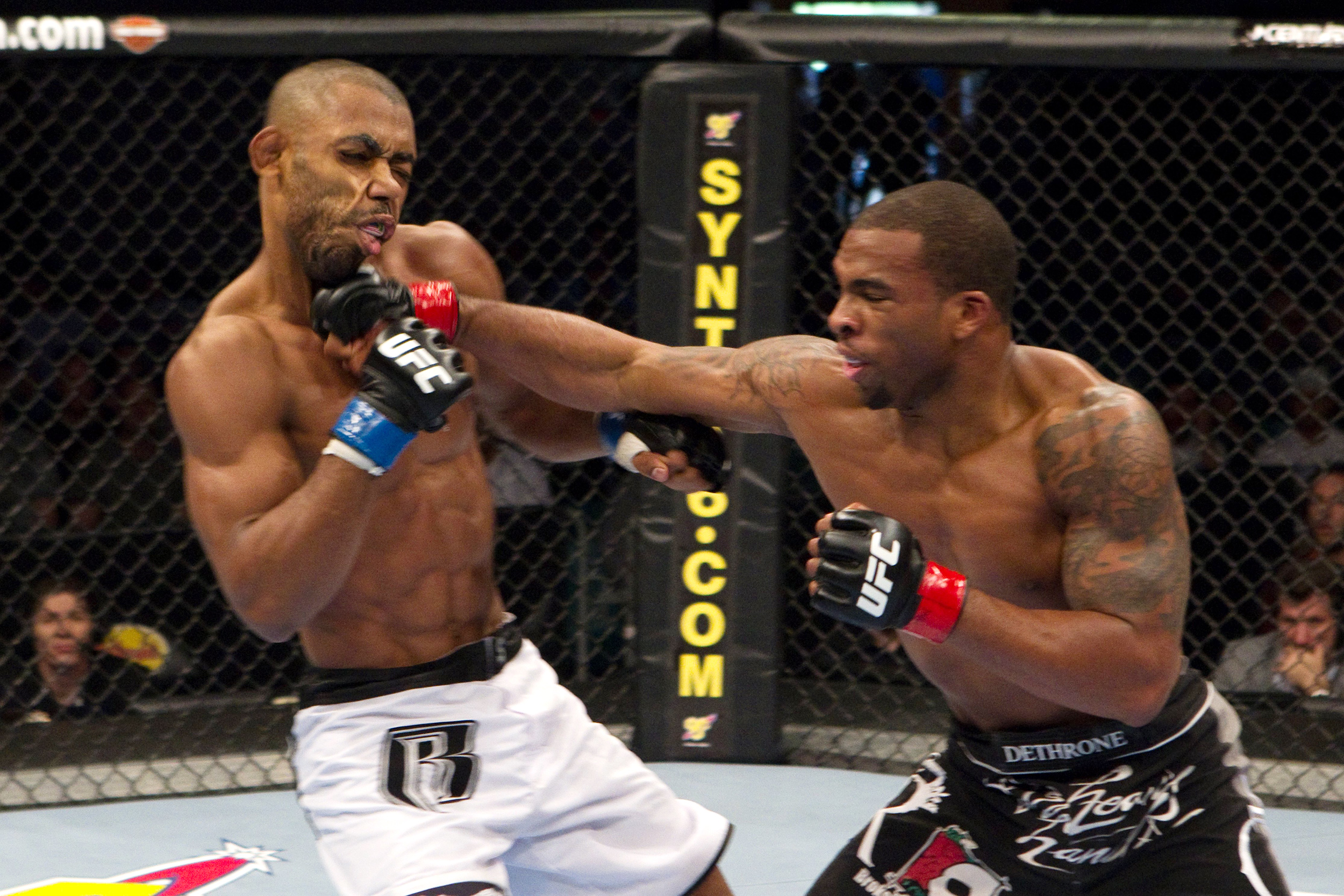
Gerald Harris punches Mario Miranda during UFC Fight Night 21 at Bojangles Coliseum on March 31, 2010 in Charlotte, North Carolina. ~photo by Josh Hedges/Getty Images/Zuffa, LLC
Gerald Harris stepped on the scale on and saw the number he was hoping for: 184 pounds.
Perfect.
He was one pound under the mixed martial arts middleweight limit of 185 just one day before a big event. The weight-trimming process was complete, and he could now begin rehydrating his body and focusing on competing.
Only not so much. There was no opponent, no fight at all.
“It was a long shot,” Harris said, “trying to take a UFC last-minute fight.”
Harris, 41, hasn’t been on the UFC roster for a decade, and knew he faced long odds of being selected as one of the eight middleweight fighters to compete at the UFC Apex on Aug. 8.
Yet the dream won’t die.
Harris doesn’t need to fight to live anymore. The income stream from his gym, Hurricane Training Center, in Tulsa, Oklahoma, is enough to support his family. But his urge to compete remains, and he’s one of the many fighters in their late 30s and early 40s linked by the same goal: one more shot on the sport’s biggest stage.
But for fighters on the wrong side of their athletic primes, the uphill battle to get to the UFC is at its steepest ever.
In 2010, Harris was among hundreds of fighters on the UFC’s roster. He chalked up two technical-knockout victories and one highlight-reel slam knockout of then-undefeated fighter David Branch in his first seven months with MMA’s version of a major league.
But after one loss in a three-round bout that forced the cage-side judges to decide a winner, a fight deemed disappointing by fans due to a far lower rate of action than his previous three bouts, Harris was released.
“That UFC cut really messed me up,” Harris said. “It meant the world to me at the time. My whole goal when I started getting into this was I wanted to get in the UFC, and it just gets taken away.”
In less than a year, Harris went from celebrating his victorious UFC debut to returning to a day job as a schoolteacher and training for fights in his free time.
As Harris describes it, the UFC “is more of a dream to people” than a place to call home for fighters who don’t possess the transcendent star power of the sport’s biggest names such as Conor McGregor or Jon Jones. While McGregor got a guaranteed $3 million just for stepping into the famed Octagon to headline UFC 257, the organization’s first pay-per-view of 2021, those who fought on the undercard walked away with as little as $13,500 gross income. And that’s before they paid their trainers.
A Hot League
“fighting is a young man’s game.” UFC President Dana White
The UFC, established in 1993, emerged as the face of MMA over time — a sport that aims to dethrone boxing and its 20th century stars like Jack Dempsey, Joe Louis and Muhammad Ali to become combat sports’ main attraction.
Though MMA still has a fight ahead of it to achieve mainstream acceptance — its in-your-face violent nature stemming from the inclusion of kicking, elbowing and permission to choke your opponent unconscious provides a hard pill to swallow for some of the sports audience — the UFC cemented its spot at the forefront of the sport’s push when it was sold for $4 billion to sports conglomerate WME-IMG in 2016.
Bringing its brand to one of the largest sports platforms in the world, the UFC inked a five-year, $1.5-billion deal with ESPN for its broadcasting rights in May 2018. Almost overnight, ESPN’s coverage of the sport went from paltry to a regular part of network coverage.
With name recognition so ingrained in the minds of viewers that they equate the league itself to the entirety of the sport, the UFC is holding steady atop the likes of stateside competitors such as Bellator MMA, Professional Fighters League and dozens of other MMA promotions across the globe, making it the destination prospective athletes target as the end goal upon pursuing a career in the sport.
There are only so many spots to be filled, though, as the UFC keeps roughly 600 fighters on its roster, all of whom are having their performance inside the Octagon constantly evaluated.
On top of that, UFC President Dana White has never shied away from insisting that “fighting is a young man’s game.”
The average age of UFC champions and top-15 ranked fighters across all weight classes is 32 years old.
Look outside of the UFC’s crop of title contenders and you’ll find a mix of tenured UFC veterans who’ve spent their career growing under the company’s watchful eyes and young talent angling to fill the contender roles in the coming years as the current group ages out. That pool of young fighters continues to grow as MMA’s popularity increases, and athletes who focus entirely on fighting from a young age gain an edge over those who transition from other sports such as boxing, kickboxing or college wrestling later in life.
Veteran fighters with long lists of fights on their records, names that don’t move the needle for the average what-have-you-done-for-me-lately MMA fan, and ages closer to 50 than 20 don’t exactly fit the archetype of what the UFC looks to add to its roster.
‘Make-or-break UFC’
At 38, Jesse Taylor is still out to prove he’s among the rare athletes who hit their peaks in their late 30s, and he wants to do so by competing at the sport’s highest level.
Taylor got his first chance at reaching his dream when he competed on the seventh season of “The Ultimate Fighter,” the same season that helped Harris get his UFC start. The show, which debuted in 2005, pits fighters against one another in a tournament that ends with the winner receiving a six-figure UFC deal.
Taylor ultimately fumbled his shot, getting removed from the reality show despite his perfect record of fights due to a drunken tirade in Las Vegas with fellow cast members before his fight in the show’s finale.
He would still get a shot with the UFC, however. He fought fellow Ultimate Fighter veteran CB Dollaway at a UFC event on July 19, 2008, in Las Vegas. Taylor lost the fight after Dollaway forced him to tap out to a choke applied in the first round of their three-round bout.
Taylor was then released by the UFC, forcing him back to the sport’s outer circuit.
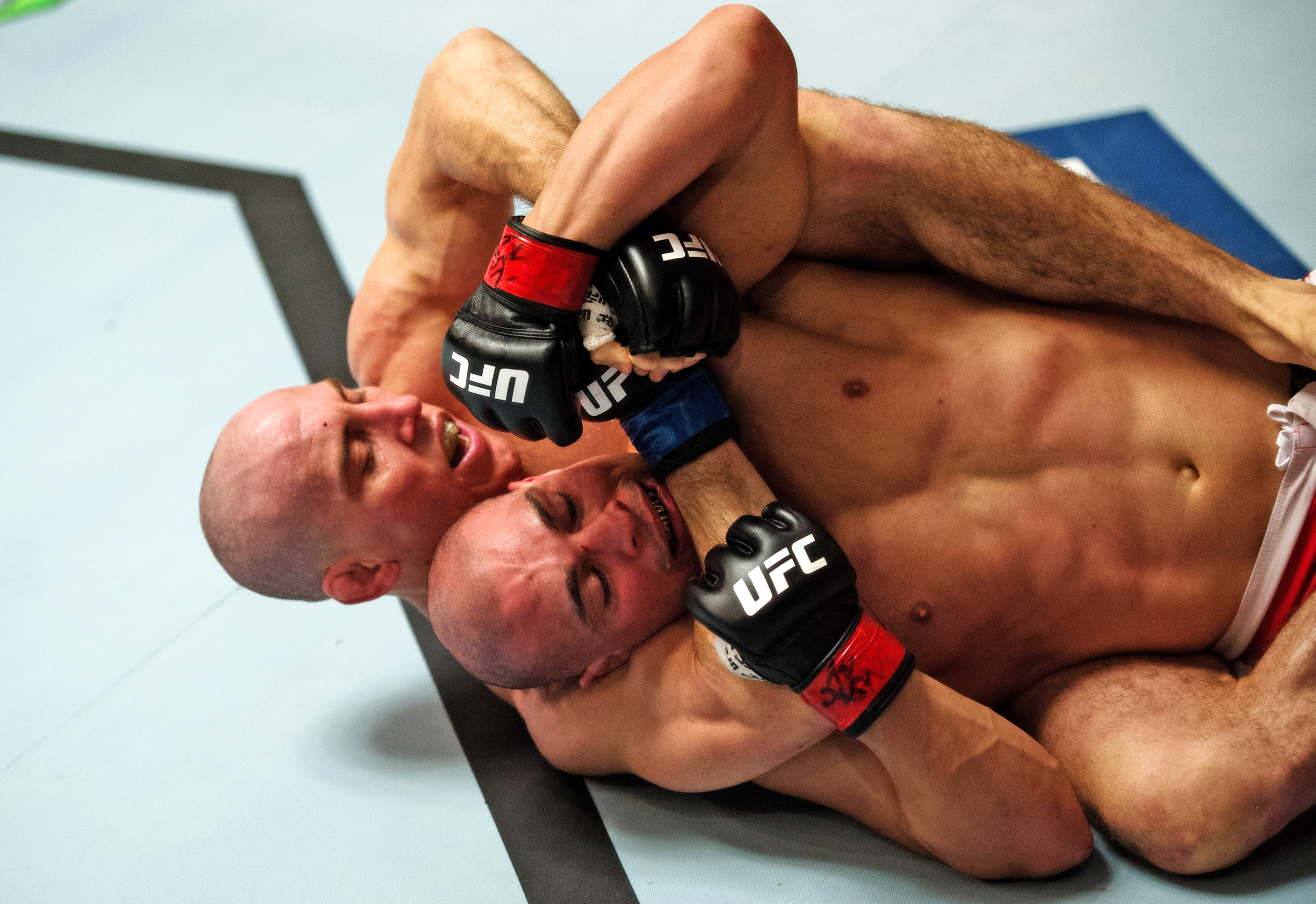
Jesse Taylor attempts to subdue Hayder Hassan during the filming of The Ultimate Fighter: Redemption at the UFC TUF Gym on February 22, 2017, in Las Vegas, Nevada. ~photo by Brandon Magnus/Getty Images/Zuffa, LLC
While other organizations do not possess the name recognition, TV platform or capital the UFC has, the premier organization is not the sport’s lone land of opportunity.
Fighters like Taylor, Harris and others have found this out through experience upon losing their spots on the UFC roster. If you’re fighting to stay afloat, you need someone to pay you to get in the cage.
And for someone looking for any way to get back to the sport’s apex, the opportunity of potential exposure provided by the assortment of MMA promotions beneath the UFC is what’s most sought after.
Melvin Guillard, 37, made a name for himself in the UFC because of his powerful fists that helped lead him to 12 wins in the Octagon. But when he captured victories in just two of his last eight fights under the UFC banner, a run that ended in a unanimous decision loss to Michael Johnson, Guillard was out of a job.
Aiming to prove the UFC should give him another chance, Guillard has fought 11 times in professional MMA since being released in 2014, and he hasn’t limited himself to one organization, either.
His first stop came at World Series of Fighting, and after posting a 1-1 record — and failing to meet the 156-pound non-championship weight limit for lightweight bouts in his loss — Guillard was released.
Next came Bellator, where three losses and one overturned win after testing positive for a non-performance-enhancing substance — cocaine, according to a report by MMAFighting — in an in-competition drug test sent him packing once again.
Like Taylor, who traveled from his home base of California to compete in Mexico, Japan, Canada, Australia, Panama, Poland, Bahrain, Ireland, Wales, Argentina, Russia and England, Guillard made stops in China, Australia and Japan, with returns to his home country of the United States in between.
“It’s not all about the money to go overseas. It’s more about the experiences that I’ve enjoyed over the past 12 to 13 years of my career,” Guillard said. “It’s the meeting good people, making new friends. That kind of stuff right there is priceless.”
And the money — or lack of having to spend it — has been good as well, Guillard contends.
“I see the world on other people’s dollar,” Guillard said. “I don’t think I’ve ever paid for a trip to leave the country.”
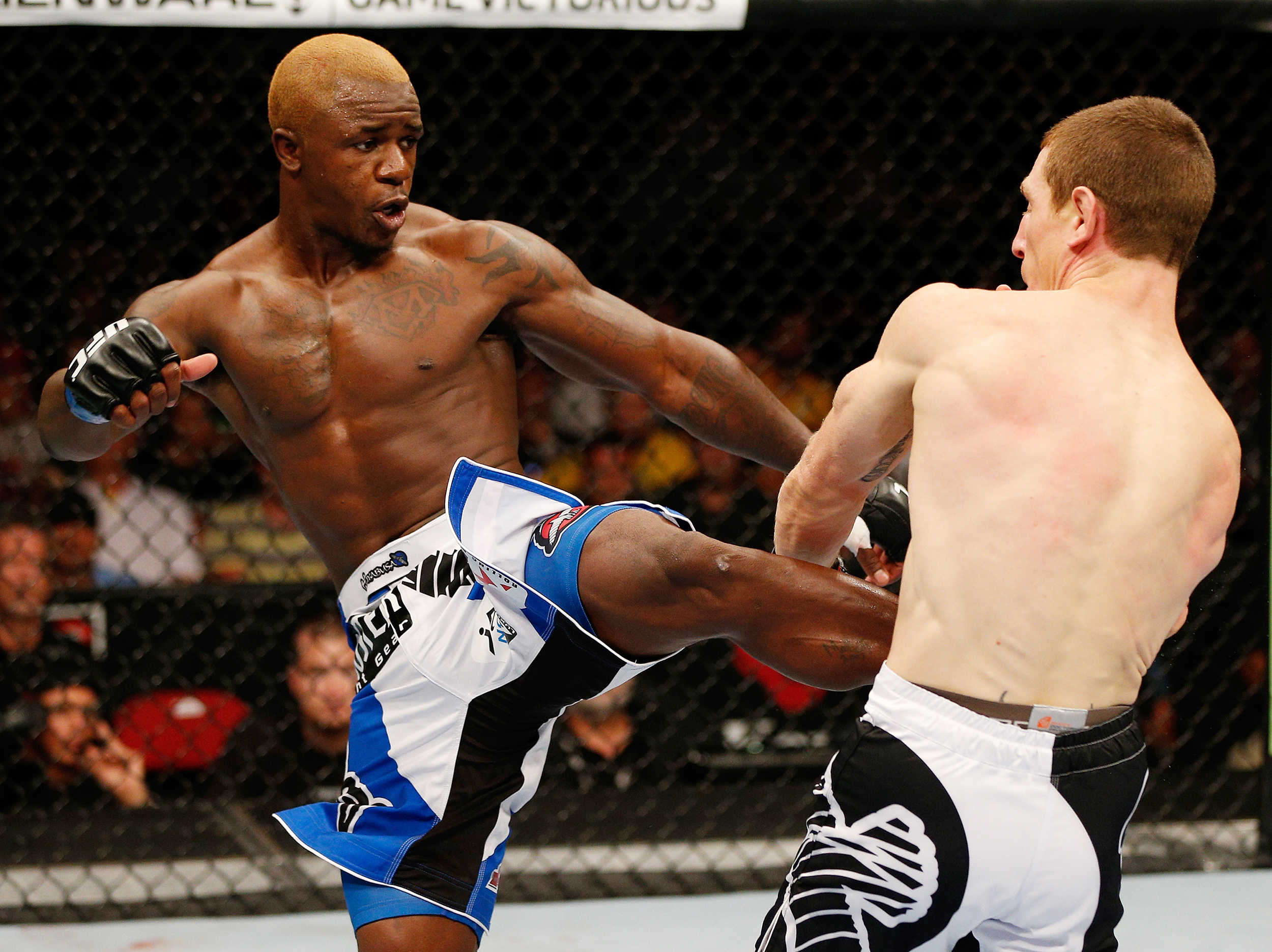
Melvin Guillard kicks Mac Danzig in their lightweight bout during the UFC on FOX event at Key Arena on July 27, 2013 in Seattle, Washington. ~photo by Josh Hedges/Getty Images/Zuffa, LLC
Through all of Guillard’s travels, he has maintained hope that the UFC would eventually call him back so he could test himself against elite talent in front of a massive audience once more. For others, though, broadening horizons as one’s athletic window closes can provide new forms of opportunity.
At 35, Thanh Le looks back on how he spent his early days of fighting with few regrets. He started fighting at 26 and kept a day job as a banker through his first few professional bouts. Any time not spent working or sleeping was dedicated to training, as he felt the need to catch up to his peers who had embraced MMA at a younger age.
But if he could give a piece of advice to that young, hungry fighter, it would be to avoid tunnel vision.
“I spent a little bit of the first half of my career really trying to get to one specific spot. And that took away from me enjoying the ride,” Le said. “It was like make-or-break UFC, and if I don’t make that, I’m a nobody as a fighter and I’m nothing.”
Le had multiple opportunities to compete under the watchful eye of the UFC’s president. He competed on the 22nd season of “The Ultimate Fighter,” where he went on to win one fight before losing his second, falling short of the UFC contract that awaited the winner of the show.
Le also competed on “Dana White’s Contender Series,” a quick-paced, Tuesday night show in which fighters compete against one another in front of White in hopes of impressing him enough to earn an entry to the UFC. Though he won his bout in the first season by second-round knockout, a UFC contract once again did not fall into his hands.
After two fights in Legacy Fighting Alliance in which he went 1-1, Le received an opportunity with ONE Championship, a promotion based in Singapore.
Leaving his native Louisiana for one fight in Jakarta, Indonesia, followed by two in Bangkok, Thailand, Le racked up three wins that earned him a shot at ONE Championship’s lightweight title.
Le cashed in, defeating reigning champion Martin Nguyen by technical knockout in the third round of their Oct. 30 clash last year in Singapore.
Now at the top of the mountain across the globe, Le is at peace with how his career has unfolded, though he intends to continue fighting in ONE Championship for more accolades.
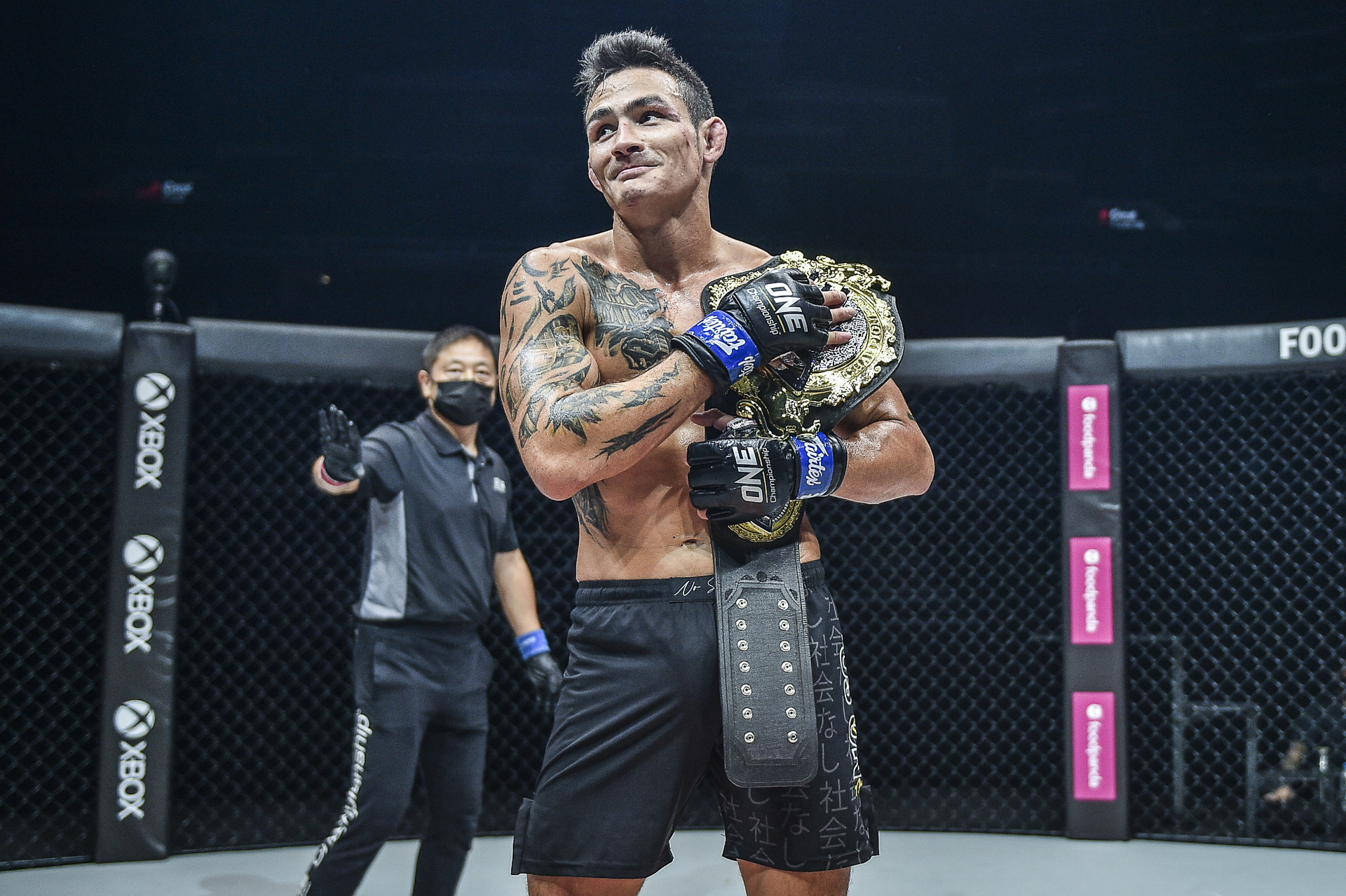
Le competed for, but fell short of a UFC contract. He moved on to ONE Championship, based in Singapore, where he has had great success.
“It doesn’t always have to work out (the way you’d expect) and play out that way for you to still be the best martial artist you can possibly be — for you to get the toughest matchups possible, for you to fight the best guys in the world,” Le said.
COVID crunch
Regardless of a fighter’s perspective on international championships, competing internationally has only been further complicated by the COVID-19 pandemic.
Le is one of the lucky ones. Participating in mandatory testing and quarantine procedures, he managed to get his title shot with ONE Championship.
Le said his process included taking a COVID-19 test before leaving the United States, upon arrival in Singapore and a week after arriving in the country. He quarantined and only left his room to train.
He left Singapore with ONE Championship’s lightweight title.
Others haven’t had much luck.
Taylor’s last MMA fight took place in October 2019 in Russia under the promotion ACA. Though he remained in contact with the organization, travel restrictions and increased costs that come with safely bringing in fighters who reside outside of Russia have largely shut the door on Taylor’s chances of competing for ACA again for the foreseeable future.
He has since turned toward stateside martial arts tournaments. Taylor competes in grappling tournaments — punch-free bouts in which competitors aim to choke one another into submission — to remain active, refine his skills in a martial art crucial to MMA competition, and maintain an income to complement his reserves built from past pro fights and sponsorship opportunities.
Guillard has now been inactive from combat sports competition for over a year. He has since taken a job working in an Amazon warehouse for a stable income, a job he intends to keep once he receives a chance to fight again.
It’s a microcosm of a larger problem for aging fighters: The opportunities to fight are drying up.
Smaller organizations are unlikely to bring in veteran fighters because they want to develop younger talent, and, even if they are willing to sign older athletes, agreeable compensation for the fighters’ services becomes an issue of its own.
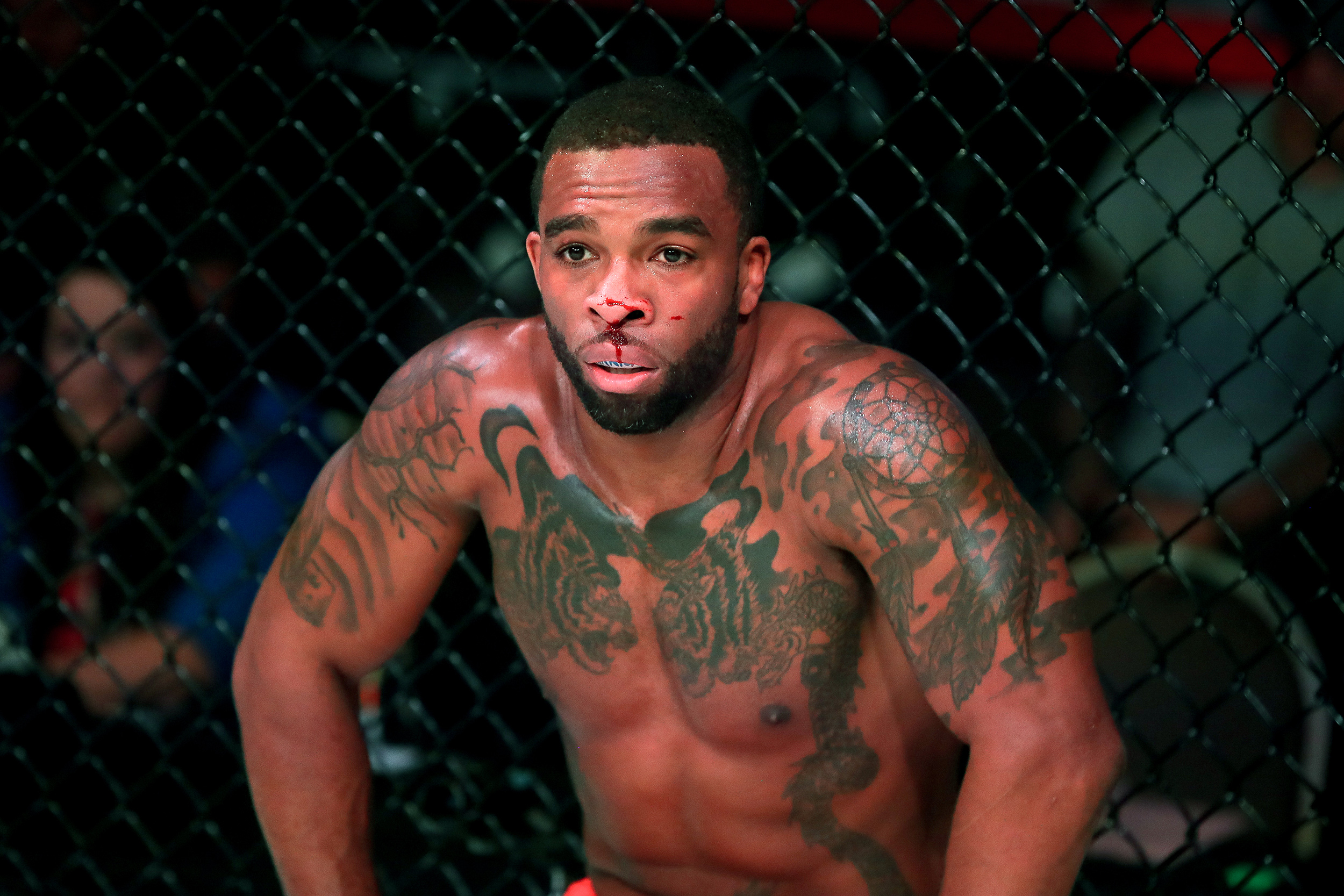
Harris says while he wants to fight again he is proud of his career as an MMA fighter.
Harris last competed in November 2019 for Oklahoma regional promotion C3 Fights, winning his headlining matchup against fellow UFC veteran Seth Baczynski by unanimous decision after three rounds.
His pay paled in comparison to figures he previously attained in his time with the UFC and Bellator.
“It was the highest for that card, but it’s the lowest I’ve been paid in 10 years,” Harris said. “I mean, I walked out of the UFC with a $100,000 check before.”
The average UFC fighter — not the McGregors, Joneses, Ronda Rouseys of the world who headline pay-per-view events every time they compete — makes roughly $18,000 to $20,000 to show up to fight at the proper weight, according to estimates made by BloodyElbow.com journalist John S. Nash. The projections are based off documents released in the UFC antitrust lawsuit that show the average UFC fighter made roughly $14,000 to show up to fight in 2013-14.
UFC contract structures typically include a “win” bonus equivalent to the show total. Additional bonuses for awards such as “Fight of the Night” and “Performance of the Night” are typically $50,000, though they are only attained when fighters’ exceed expectations as determined by UFC brass.
Once a fighter’s gross income is determined, the payouts to trainers, gyms and managers begin.
“You’ve gotta look at it like this, you’re probably gonna fight twice a year in the UFC or in Bellator. If you get a bonus, that’s amazing. But here’s the thing, if you come home with 30 grand, that (must) last six-to-eight months,” Harris said. “That’s not a lot.”
With notoriety though — whether it be from making names for themselves within the UFC or outside of it — comes bargaining power, which is how fighters like McGregor walk away from the negotiating table with a guaranteed $3 million flat despite losing to Dustin Poirier in UFC 257’s headliner.
While the UFC remains reliant on its superstars to maintain its popularity growth, it is also trying to cut down its spending, particularly amid the ongoing pandemic.
At a post-event press conference on Dec. 5, White said the UFC expected to make significant cuts to its “very inflated” roster. Though he estimated about 60 fighters would be released, roughly a dozen athletes were cut by the UFC before the new year, and an exact total has not been released by the promotion.
White’s words came shortly after the UFC released 44-year-old middleweight contender Yoel Romero, who took home a reported $350,000 following his loss against UFC middleweight champion Israel Adesanya on March 7, 2020.
In 2020, the UFC also parted with Brazilian star Anderson Silva after a nearly 15-year working relationship that saw Silva become one of the UFC’s most notable names. The 45-year-old fighter earned a reported $750,000 show purse in his final UFC bout, a loss to middleweight contender Uriah Hall.
The UFC’s cost-cutting strategy includes an increase in younger, lesser-known fighters brought in from “Dana White’s Contender Series” on long-term, small-figure deals to counterbalance the large sums paid out to its stars who top every event.
With major stars selling the product at the top of the card and younger, cheaper fighters filling the gaps below, the older fighters in between, who’ve accumulated both notoriety and larger contracts, are squeezed out.
It’s a part of reality for many of the fighters who still long for one last shot at glory.
“It’s just too much young talent out there,” Harris said before reaffirming that he doesn’t hold any resentment toward young athletes getting opportunities. “That was me 15 years ago.”
Keep fighting
Even after all the explanations, it can be tough to understand why old veterans want to come back.
Why put your body through torment for a chance that may never come? Why hold onto hope for a call you may never get?
Why love a game that doesn’t love you back?
There’s no single answer.
For Harris, who has retired from the sport on more than one occasion, the yearning for a final opportunity is paired with satisfaction in what he did in his time as an MMA fighter.
“If I don’t ever fight again. I wouldn’t be sad. I really like the fact that I ended my career on a win, because everything I’ve done in life I’ve ended in a loss. My wrestling career, the last match I had was in the NCAA championships and I got beat. And in high school, my last match in high school I got second place in the state finals. You know in elementary my last match was in junior high states and I got beat,” Harris said. “For once in my life, can I win … before I quit?”
For Taylor, it’s a shot at proving the UFC made a mistake releasing him.
“I don’t want to say that door is closed (with the UFC). It makes me hungry to get back in there. I want to use that bitterness,” he said. “I feel good, and I want to retire on my own terms.”
And for fighters like Guillard, it just comes from the desire to live a dream for as long as possible.
“It’s been a lifetime achievement for me to continue fighting at this age and still be healthy,” Guillard said. “Like I tell everybody, I don’t think about when it’s going to be over. I just want to continue to fight.”
~ 01.27.2021
Thank you for your time and dedication to the sport of MMA.